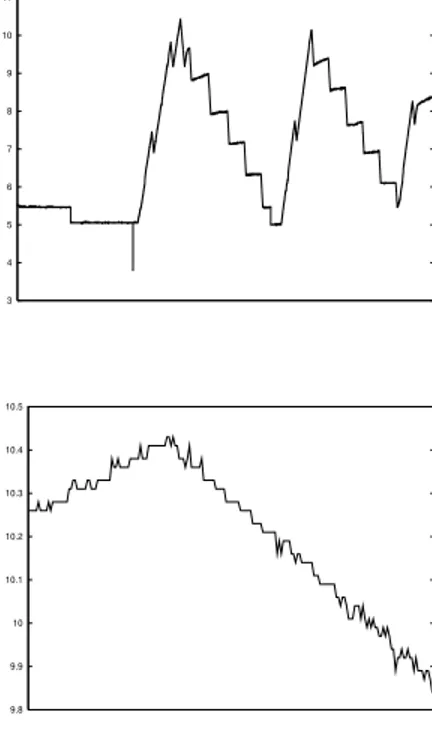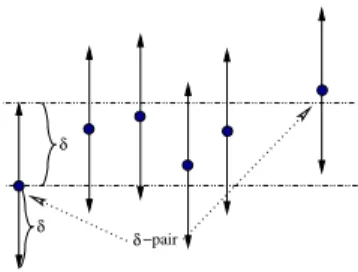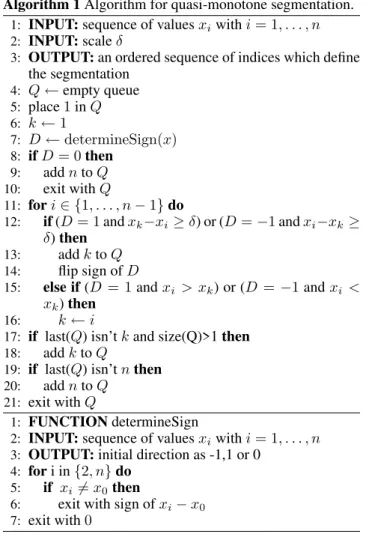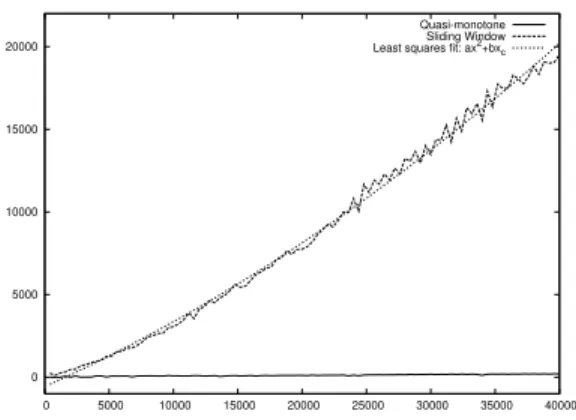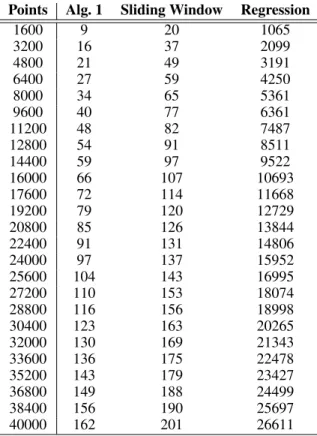Publisher’s version / Version de l'éditeur:
Vous avez des questions? Nous pouvons vous aider. Pour communiquer directement avec un auteur, consultez la première page de la revue dans laquelle son article a été publié afin de trouver ses coordonnées. Si vous n’arrivez pas à les repérer, communiquez avec nous à PublicationsArchive-ArchivesPublications@nrc-cnrc.gc.ca. Questions? Contact the NRC Publications Archive team at
PublicationsArchive-ArchivesPublications@nrc-cnrc.gc.ca. If you wish to email the authors directly, please see the first page of the publication for their contact information.
https://publications-cnrc.canada.ca/fra/droits
L’accès à ce site Web et l’utilisation de son contenu sont assujettis aux conditions présentées dans le site LISEZ CES CONDITIONS ATTENTIVEMENT AVANT D’UTILISER CE SITE WEB.
Proceedings of the Twentieth National Conference on Artificial Intelligence
(AAAI-05), 2005
READ THESE TERMS AND CONDITIONS CAREFULLY BEFORE USING THIS WEBSITE. https://nrc-publications.canada.ca/eng/copyright
NRC Publications Archive Record / Notice des Archives des publications du CNRC :
https://nrc-publications.canada.ca/eng/view/object/?id=99a9e3a2-eb42-4eee-8af9-287e383e4402
https://publications-cnrc.canada.ca/fra/voir/objet/?id=99a9e3a2-eb42-4eee-8af9-287e383e4402
NRC Publications Archive
Archives des publications du CNRC
This publication could be one of several versions: author’s original, accepted manuscript or the publisher’s version. / La version de cette publication peut être l’une des suivantes : la version prépublication de l’auteur, la version acceptée du manuscrit ou la version de l’éditeur.
Access and use of this website and the material on it are subject to the Terms and Conditions set forth at
Quasi-monotonic Segmentation of State Variable Behavior for
Reactive Control
National Research Council Canada Institute for Information Technology Conseil national de recherches Canada Institut de technologie de l'information
Quasi-monotonic Segmentation of State Variable
Behaviour for Reactive Control *
Fitzgerald, W., Lemire, D., Brooks, M.
July 2005
* published in the Proceedings of the Twentieth National Conference on Artificial Intelligence (AAAI-05), Pittsburg, Pennsylvania, USA. July 9 - 13, 2005. NRC-48223.
Copyright 2005 by
National Research Council of Canada
Permission is granted to quote short excerpts and to reproduce figures and tables from this report, provided that the source of such material is fully acknowledged.
Quasi-monotonic segmentation of state variable behavior for reactive control
Will Fitzgerald
QSS Group, Inc. NASA Ames Research Center
Moffett Field, CA, 94035
Daniel Lemire
University of Quebec in Montreal 4750 Henri-Julien Montréal, QC H2T 3E4
Martin Brooks
National Research Council of Canada 1200 Montreal Road
Ottawa, ON K1A 0R6
Abstract
Real-world agents must react to changing conditions as they execute planned tasks. Conditions are typically monitored through time series representing state variables. While some predicates on these times series only consider one measure at a time, other predicates, sometimes called episodic predi-cates, consider sets of measures. We consider a special class of episodic predicates based on segmentation of the the mea-sures into quasi-monotonic intervals where each interval is ei-ther quasi-increasing, quasi-decreasing, or quasi-flat. While being scale-based, this approach is also computational effi-cient and results can be computed exactly without need for approximation algorithms. Our approach is compared to lin-ear spline and regression analysis.
Reactive control and monitoring
It has been recognized for some time that real-world agents have to monitor conditions as they execute planned tasks. It is rarely the case that the only changes that can occur in the world result from actions taken by the agent. Actions taken by other agents, uncontrollable events occurring in the physical world, and the presence of noise and uncertainty are the norm.
Given this, an agent must be able to react to changes in the world. Moreover, the agent must be able to notice the changes in the first place. A typical description of this is a three-tiered architecture (Bonasso et al. 1997), with sensors and effectors at the “bottom” tier, and a high-level planner at the “top” tier. In between, the task execution system moni-tors for changing conditions and executes actions as appro-priate based on the goals given it by the planner. Reactive task execution systems include EXEC (Pell et al. 1997), the RAP System (Firby 1989), PRS (Myers 1996), and Apex (Freed et al. 2003).
Of course, the conditions to which an agent might imag-inably react can be arbitrarily complex, and, for an agent acting in the real world, a “paralysis of analysis” prevents effective action. Part of an effective architecture for agent design is describing the kinds of useful conditions which are likely to be relevant to the agent making use of the kinds of sensors typically available to the agent. Furthermore, it must be feasible–that is, computational efficient–to recognize the
Copyright c 2005, American Association for Artificial Intelli-gence (www.aaai.org). All rights reserved.
In AAAI05, Pittsburg, USA, July 2005.
relevant conditions, especially in concert with a variety of simultaneously executing tasks and monitors.
Sensors nominally create time-stamped data, with read-ings sometimes done at constant intervals, sometimes not. Each reading provides a time-stamped measurement of a state variable, that is, an attribute of some object (often the agent, or a component of the agent), which changes over time. For example, an autonomous aircraft will typi-cally have sensors for its own altitude, longitude and lati-tude, among other measurements. Tasks such as “raise-gear” might have a precondition that the measured altitude be≥ a certain amount.
Given the time series nature of such sensor data, it is nat-ural to consider monitors being “live” for some interval of time. Within such an intervalI, we have an ordered set of measurements for a given sensor, {xt}, ordered by time t. If P is a boolean predicate on x, and n is the cardinality of{xt}, then testing for a value in I upon which P is true is clearly at leastO(n). In a typical case, P is of constant complexity (such as the example of≥ given above), and so, testing for value upon whichP is true is O(n).
Predicates on individual measurement values are not the only possible boolean predicates of interest. For example, an agent might want to act when the average value of a mea-surement within an interval reaches a certain point. The presence of a condition based on multiple measurements (of the same or different state variable) is sometimes called an episode(Mannila, Toivonen, & Verkamo 1997). Episodic predicates can, of course, be arbitrarily complex, and thus be difficult or impossible for an agent to consider. In this pa-per, we discuss one particular class of episodic predicates, namely those based on segmenting an ordered set of mea-surements according to changes in monotonicity. For ex-ample, consider Fig. 1, which shows a flight path of an air-plane (simulated) as it takes off, circles an airport, and then crashes. A reactive controller may monitor for nominal con-ditions, such as (in the present case) making the first turn. A controller may also monitor for off-nominal conditions, such as failing to make a turn, or (in the present case) “in danger of crashing.” In the nominal case, “making a turn” can be sensed by the appropriate increase in longitude and/or lati-tude. In the off-nominal example, “in danger of crashing” can be sensed by the an unexpected decrease in altitude.
0 200 400 600 800 1000 1200 1400
Figure 1: Flight path of airplane
segments, then such a change in monotonicity would be triv-ial to detect. Sensors, of course, do not do so, for a variety of reasons. First, sensors are typically sampled at some rate, creating discontinuities. Second, exogenous events cause changes in sensor values which can be non-continuous; in-deed, if this were not the case, there would be little need for sensors. Third, sensors inherently produce some amount of error, which can be minimized but never eliminated.
Consider the two plots in Fig. 2, which show real data from a life-support application, showing the measured mass of a distillant in a tank. The top plot exemplifies “noise” due to exogenous events. It is clear that the mass increases (as distillant flows into the tank), then decreases (as it is pumped out of the tank). There are slight “jags” on the increase and decrease (due to some exogenous event such as a cycling pump), but these can be ignored. There is another indication of noise at the beginning of the first increase, probably due to someone picking up the tank and replacing it.
The second plot exemplifies the other kinds of noise; this magnification of the first peak shows the discrete nature of sampling and the inherent error of the scale become evident. Essentially, we would like to segment the time series of measurements of a state variable into regions of alternating sign, ignoring small violations of monotonicity. An algo-rithm for doing this has three desiderata: (1) it must pro-vide such a segmentation in a way that is both intuitively and mathematically sound; (2) it must be computationally efficient enough to run in real time, and (3) ideally, it is an on-linealgorithm that can be updated efficiently as an agent acts and senses in the world.
In this paper, we present an algorithm for segmenta-tion of state variable measurements based on the quasi-monotonic segmentationideas of (Brooks 1994), which pro-vides a mathematically well-motivated notion of monotonic segmentation at a given scale. The algorithm isO(n), where n in the number of measurements, and only requires con-stant space. It is also an on-line algorithm, whose update runs in constant time and space. We contrast this with al-gorithms typically used for segmentation, based on linear splining and regression techniques, which provide less intu-itive results and are, in fact,O(n2).
3 4 5 6 7 8 9 10 11 9.8 9.9 10 10.1 10.2 10.3 10.4 10.5
Figure 2: Mass data at different scales
Quasi-monotonic segmentation
For a state variablex, say that an ordered set of measure-ments of x, {xk} is monotonic if either xk ≥ xk+1 or xk ≤ xk+1. As we have stated, this does not capture an in-teresting understanding of “monotonic,” due to the sources of noise mentioned above. For practical applications, we want to tolerate some deviation from monotonicity. One possible way to describe allowing such a toleration is to say, given an ordered set of measurements{xk} and some toler-ance value δ > 0, that the data points are not going down or are upward monotone, if consecutive measures do not go down by more thanδ, that is, are such that xi− xi+1 > δ. However, this definition is not very useful because measures can repeatedly go down and (eventually) the end value can be substantially lower than the start value. A more useful definition of upward monotonicity is to require that we can-not find two successive measuresxi andxj (j > i) such thatxj is lower thanxibyδ (xi− xj > δ). This definition is more useful because in the worse case, the last measure will be onlyδ smaller than the first measure. However, we are still not guaranteed that the data does in fact increase. Hence, we ask that we can find at least two successive mea-suresxk andxl(l > k) such that xlis greater thanxkby at leastδ (xl− xk ≥ δ).
In order to formalize this concept, we will use the idea of δ-pair introduced in (Brooks 1994) (see Fig. 3). Let F be a function, andD be its domain. The tuple x, y (x < y ∈ D) is aδ-pair (or a pair of scale δ) for F if |F (y) − F (x)| ≥ δ and for allz ∈ D, x < z < y implies |F (z) − F (x)| < δ and|F (y) − F (z)| < δ. A δ-pair’s direction is increasing or
δ δ
δ−pair
Figure 3: Aδ-pair.
decreasingaccording to whetherF (y) > F (x) or F (y) < F (x).
Notice that pairs of scaleδ having opposite directions can-not overlap but they may share an end point. Pairs of scale δ of the same direction may overlap, but may not be nested. We use the term “pair” to indicate aδ-pair having an unspec-ifiedδ.
We say that a sequence of measures X = {xk}k is δ-monotonic if allδ-pairs have the same sign (all increasing or all decreasing). Given aδ-monotonic data set, we say that it isδ-flat if it contains no δ-pair and it is δ-increasing (resp. decreasing) if allδ-pairs are increasing (resp. decreasing).
Given a sequence of measuresX = {xk}k=1,...,N, a seg-mentationX1. . . Xn is given by a set ofn + 1 indices yi such that yi+1 > yi, y1 = 1 and yn+1 = N and where Xi = {xk}k=yi,...,yi+1. A segmentation is an extremal
seg-mentation at scaleδ if 1. AllXiareδ-monotone;
2. No two adjacent segments have the same monotonicity (flat, increasing, decreasing);
3. For i = 2, . . . , n, xyi = max Xi ∪ Xi−1 or xyi =
min Xi∪ Xi−1;
4. Unless X1 is δ-flat, x1 = max X1 or x1 = min X1 ; unlessXnisδ-flat, xN = max XnorxN = min Xn. The merger of a δ-increasing (resp. decreasing) seg-ment with aδ-flat segment is δ-increasing (resp. decreas-ing). Hence, depending on whether or not we considerδ-flat segments, we can have various extremal segmentation with varying number of segments. However, if we excludeδ-flat segments, then the number of segments will be the same for all extremal segmentations at the same scale.
Algorithm for segmentation
Algorithm 1 presents an algorithm for quasi-monotone seg-mentation. A queue is initialized with the index of the first measurement. After determining the initial direction of the measurements, it scans through the measurements, keeping a back-pointer to the last extremum, which is initialized to the first position. When the difference between an element and the measurement at the back-pointer exceedsδ, and the newδ-pair switches signs, a new extremum is added to the queue, the sign is flipped and the back-pointer updated. Af-ter completing the scan, the index of the last measurement is added to the queue if it isn’t already present.
Basic initialization (lines 4–6) take constant time. The determineSignfunction takes no more thann − 1 steps (in practice, it will take many fewer). The algorithm is domi-nated by the loop in lines 8–19, which is runn times. All of the comparisons and assignments within the loop take con-stant time; thus the loop runs in O(n). Checking for the presence of the last index in the queue (line 20), and adding it to the queue if it isn’t present, takes constant time. Thus, Algorithm 1 isO(n).
All variables (except for the output queue) in Algorithm 1 take constant space.
Note that Algorithm 1 can easily be converted to an on-line algorithm by converting the for loop into a stream con-sumer. As new measurements arrive, they either result in a new extremum, in which case the new extremum is output.
Theorem 1 Algorithm 1 generates an extremal
segmenta-tion at scaleδ.
Proof. Any segment having last index k that was added to Q while D = 1 cannot have decreasing δ-pairs. Indeed, suppose that there exist indexesl, j in the segment such that l < j and xl− xj ≥ δ. When i (the variable of the main for loop) took valuej, the maximum of the segment up to this point wasxkwithxk ≥ xl⇒ xk− xj ≥ xl− xjand because j is included in the segment, xk− xj < δ hence xl− xjδ.Similarly, we could also show that segments with D = −1 cannot have increasing δ-pairs.
Next, notice that the end of all segments, except possi-ble the last two, is set before or at the beginning of a δ-pair with an opposite direction (decreasing ifD = 1 or vice versa). This means that all segments except possibly the first one and the last one are eitherδ-increasing or δ-decreasing and they alternate. Observe that when either of the first or last segment is neitherδ-increasing nor δ-decreasing, then it must beδ-flat.
As the next theorem shows, our definitions and Algo-rithm 1 allow for a multiscale analysis: we can relate anal-yses done at different scales. In short, as we reduce the tol-erance, existing segments will be partitioned and new end-points will be added, but existing end-end-points will remain.
Theorem 2 Using Algorithm 1, the segmentation points
found withδ′
< δ include those found with δ.
Proof. At scale δ and as per Algorithm 1, consider an in-creasing segment ending at indexj′
followed by a decreas-ing segment. We have thatxj′ is the maximum of both
seg-ments. A pair at scaleδ, must contain a pair at scale δ′ for all δ′
< δ. Hence, a segment increasing (decreasing) at scale δ must contain a segment increasing (resp. decreasing) a scale δ′
. Hence, there is at least one pair at scaleδ′
before (and after)j′
. Consider the last pair at scaleδ′
beforej′ , we see that it must be an increasing pair becausexj′is a maximum:
if the last pair is decreasing, then its starting point would have a value greater thanxj′which is impossible. Similarly,
the first pair at scale δ′ afterj′
is decreasing. Because j′ is the index of the first maximum with valuexj′ before the
first pair, it will be selected by the algorithm at scaleδ′ . By symmetry, the same result is shown for a segmentation point following a decreasing segment.
Consider now the second segmentation point (at indexj) preceded by a flat segment and followed by a decreasing segment at scale δ. We have that xj is the maximum of both segments. The first pair at scaleδ′
followingj must be decreasing and the last pair beforej at scale δ′
, if it exists, must be increasing. Hence,j must be a segmentation point at scaleδ′
. The result is shown similarly whenj is the index of a minimum or the second last segmentation point at scale δ.
Algorithm 1 Algorithm for quasi-monotone segmentation.
1: INPUT: sequence of valuesxiwithi = 1, . . . , n
2: INPUT: scaleδ
3: OUTPUT: an ordered sequence of indices which define
the segmentation 4: Q ← empty queue 5: place1 in Q 6: k ← 1 7: D ← determineSign(x) 8: ifD = 0 then 9: addn to Q 10: exit withQ 11: fori ∈ {1, . . . , n − 1} do 12: if (D = 1 and xk−xi≥ δ) or (D = −1 and xi−xk≥ δ) then 13: addk to Q 14: flip sign ofD
15: else if (D = 1 and xi > xk) or (D = −1 and xi < xk) then
16: k ← i
17: if last(Q) isn’t k and size(Q)>1 then
18: addk to Q
19: if last(Q) isn’t n then
20: addn to Q
21: exit withQ
1: FUNCTION determineSign
2: INPUT: sequence of valuesxiwithi = 1, . . . , n
3: OUTPUT: initial direction as -1,1 or 0
4: for i in{2, n} do
5: if xi 6= x0then
6: exit with sign ofxi− x0
7: exit with0
Examples
Figures 4, 5, and 6 show the results of running Algorithm 1 on the aircraft data and mass data described above. The three state variables of the aircraft data (latitude, longitude, and altitude) are plotted separately, and normalized to 1.01. The longitude and latitude data have been split into three seg-ments, with the middle segment beginning and ending where the aircraft began its two turns. The altitude data has been split into two segments: its steep then gradual rise, and its steep decline (and crash).
1
In the simulation, the aircraft did not fly very far–no more than 20 kilometers in either direction–so no conversion from angular measurements have been made here.
0 0.2 0.4 0.6 0.8 1 0 0.2 0.4 0.6 0.8 1
Figure 4: Segmented latitude and longitude data.
The mass of the tank plus distillant plotted in Fig. 6 ranges from about 5 to 11 (except for the anomalous drop to 4). Withδ set to 1, the data are placed into six segments: one ending at the anomalous drop, the other five tracking the general rise and fall of the sensed mass.
Comparison to other methods
Segmenting data is a standard problem in time series re-search; a useful survey can be found in (Keogh et al. 1993), who identify three types of approaches: sliding windows, in which a segment is grown until an error bound is reached; top-down, in which a time-series is recursively partitioned, and bottom-up, in which larger and larger segments are merged, starting from smallest segments. Keogh et al. also
0 0.2 0.4 0.6 0.8 1
3 4 5 6 7 8 9 10 11
Figure 6: Segmented mass data.
-0.1 -0.08 -0.06 -0.04 -0.02 0 0.02 0.04 0.06 0.08
Figure 7: Damped sign wave with noise
provide an algorithm, SWAB, which combines a sliding window and bottom-up approach (SWAB stands for “slid-ing window and bottom-up”).
Keogh et al.’s complexity analysis reveals that the top-down algorithms have a complexity ofO(n2K), where K is the number of segments created, andn is the number of points in the time series. The sliding window, bottom-up, and SWAB algorithms have a complexity ofO(n2/K).
It is interesting to consider what happens as more or fewer segments are created. The maximum number of segments is n − 1, resulting when each point is paired with its successor to create a segment, up ton − 1. In this case, the complexity of top-down inO(n3
), and the other algorithms are O(n). The minimum number of segments is1, resulting from in-cluding all of the points in the time series in the one segment. In this case, the complexity of top-down inO(n2); the other algorithms are alsoO(n2). Keogh et al. seem to assume that K will be closer to n than it is to 1, and so they claim that SWAB isO(n). Given this assumption; this is correct; how-ever, it is more reasonable to give the complexity analysis in itsO(n2/K). form.
A strong advantage of Algorithm 1 is that its complexity is not sensitive to the number of segments created. As we showed above, Algorithm 1 isO(n), and its complexity is unrelated toK.
It should be clear that monotonicity analysis is performing
0 5000 10000 15000 20000 0 5000 10000 15000 20000 25000 30000 35000 40000 Quasi-monotone Sliding Window Least squares fit: ax2
+bxc
Figure 8: Execution time: Alg.1 versus Sliding Window. Note the execution time of Alg. 1 is close to the zero axis.
a related but different task from the algorithms considered by Keogh et al.. Consider the damped sin wave,sin(x)/x, as shown (with added noise and with segmentation by Algo-rithm 1) in Fig. 7. A monotonicity analysis looks just for the locations where the function moves from decreasing to in-creasing, or vice versa. The linear analysis algorithms may also create intermediate segments between change points. This results in additional work (causing the algorithm to be O(n2), as described above), and may result in more seg-ments than are useful for monotonicity analysis.
Consider the data in Table 1, which shows the number of segments created for a time series created by a damped sin with noise function, as in Fig. 7, by three algorithms: Al-gorithm 1, a sliding window alAl-gorithm using linear splining (which is provided in the Appendix), and a sliding window algorithm using linear regression. All three algorithms pro-duce a number of segments which is (empirically) linear in the number of points, but the sliding window algorithm al-ways at least 1.5 times as many segments as Algorithm 1– the multiple decreases as the amplitude of the sin wave de-creases and the frequency dede-creases–while the linear regres-sion algorithm consistently creates about 2/3 as many seg-ments as points.
TheO(n2
) nature of the sliding window algorithm is evi-dent in Fig. 8.
To restate: the quasi-monotonicity analysis of Algo-rithm 1 and the techniques described in Keogh et al. are re-ally doing different things. The linear techniques are trying to minimize the least squares error (theL2norm), while the quasi-monotonicity analysis tries to minimize the maximum error (theL∞norm). Additionally, the techniques described in Keogh et al. produce additional segments which are not of use for analysing monotonicity, and (as a result) execute more slowly.
Limitations of quasi-monotonic segmentation
Quasi-monotonic segmentation of measurements as pro-duced by Algorithm 1 will only measure changes of direc-tion (up/down) and is oblivious to rates of change (higher derivatives). Further, δ-flat segments are always incorpo-rated into increasing or decreasing segments. When aδ-flat
Points Alg. 1 Sliding Window Regression 1600 9 20 1065 3200 16 37 2099 4800 21 49 3191 6400 27 59 4250 8000 34 65 5361 9600 40 77 6361 11200 48 82 7487 12800 54 91 8511 14400 59 97 9522 16000 66 107 10693 17600 72 114 11668 19200 79 120 12729 20800 85 126 13844 22400 91 131 14806 24000 97 137 15952 25600 104 143 16995 27200 110 153 18074 28800 116 156 18998 30400 123 163 20265 32000 130 169 21343 33600 136 175 22478 35200 143 179 23427 36800 149 188 24499 38400 156 190 25697 40000 162 201 26611
Table 1: Number of segments produced by three algorithms as the number of points increase; withδ = 0.1
segment is at the end of an segment meeting a new segment, it is ambiguous which increasing/decreasing segment it is part of. Algorithm 1 uses theL∞ (maximum) error mea-sure which can be both a positive and a negative: it will be sensitive to even a single measure aboveδ and doesn’t aver-age out the effect. However, short segments can be readily identified as noise-related in some applications or could be interpreted as being significant in other applications.
Conclusion
In reactive control, if segmentation of the state variables into time intervals is to be used as episodic functions, then linear time algorithms must used and soft-realtime process-ing must be possible. Segmentation in monotone intervals is a natural approach, but using straight-forward algorithms like linear splining is unnecessarily expensive, requires post-processing to aggregate segments having the same sign, as-suming no segment has near zero slope, and most likely re-quire approximation algorithm since optimal linear splining is not possible in linear time. On the other hand, the quasi-monotone approach we described is mathematically elegant and computationally convenient.
References
Bonasso, R. P.; Firby, J.; Gat, E.; Kortenkamp, D.; Miller, D. P.; and Slack, M. G. 1997. Experiences with an
architec-ture for intelligent, reactive agents. Journal of Experimen-tal & Theoretical Artificial Intelligence9(2/3):237–256. Brooks, M. 1994. Approximation complexity for piece-wise monotone functions and real data. Computers and Mathematics with Applications27(8).
Firby, R. J. 1989. Adaptive execution in complex dynamic worlds. Technical Report YALEU/CSD/RR #672, Com-puter Science Department, Yale University.
Freed, M.; Matessa, M.; Remington, R.; and Vera, A. 2003. How Apex automates CPM-GOMS. In Proceedings of the 2003 International Conference on Cognitive Modeling. Keogh, E.; Chu, S.; Hart, D.; and Pazzani, M. 1993. Seg-menting time series: A survey and novel approach. Mannila, H.; Toivonen, H.; and Verkamo, A. I. 1997. Dis-covery of frequent episodes in event sequences. In Data Mining and Knowledge Discovery, 259–289. Kluwer Aca-demic Publishers.
Myers, K. L. 1996. A procedural knowledge approach to task-level control. In Drabble, B., ed., Proceedings of the 3rd International Conference on Artificial Intelligence Planning Systems (AIPS-96), 158–165. AAAI Press. Pell, B.; Bernard, D. E.; Chien, S. A.; Gat, E.; Muscet-tola, N.; Nayak, P. P.; Wagner, M. D.; and Williams, B. C. 1997. An autonomous spacecraft agent prototype. In Johnson, W. L., and Hayes-Roth, B., eds., Proceedings of the First International Conference on Autonomous Agents (Agents’97), 253–261. New York: ACM Press.
Sliding window algorithm
Algorithm 2 presents a segmentation algorithm for mono-tonic segmentation using a sliding window technique of the sort described in (Keogh et al. 1993).
Algorithm 2 Sliding window linear spline computation
al-gorithm.
INPUT: two arrayst and m, where t contains time stamps andm contains measure values
INPUT: some error toleranceδ
OUTPUT: a queueQ containing indexes of nodes where we segment Q ← empty queue add 1 toQ i ← 1 while true do forj in {i + 1, . . . , n} do
Let f be the linear function with f (ti) = mi and f (tj) = mj
Letǫ = max{|f (tk) − mk|} for k ∈ {i + 1, . . . , j − 1}
ifǫ > δ then i ← j − 1 addi to Q exit for loop
ifi = n then addi to Q
